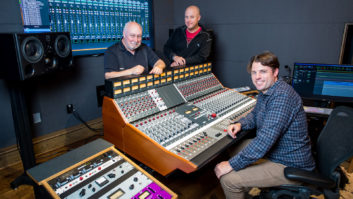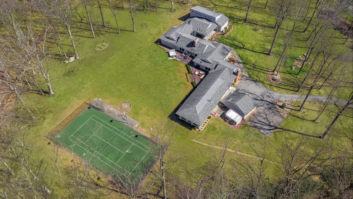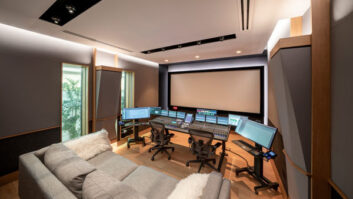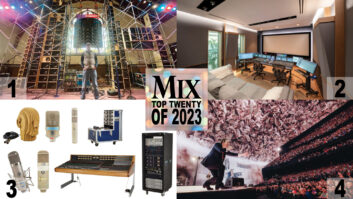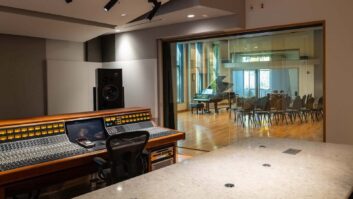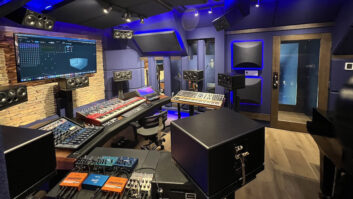
Veteran studio designer/ acoustician emphasizes building viable businesses, asking the right questions.
You’ve been at this a long time. What have been some of the important changes to your business over the years?
The biggest change was almost 20 years ago when we merged architecture with acoustics into a comprehensive service. It allowed us to deliver a quality product that matched the expectations and serviced the needs of our clients. Although I’ve been in the business for more than 35 years, Russ Berger Design Group is celebrating its 20th year in business.
We see small technology changes that make a big difference in how we work. For example, Mix had a write-up about the acoustical analysis iPhone app from Studio Six Digital [AudioTools]. I’ve been beta-testing their iAudioInterface over the past six months, and it’s going to stand the testing industry on its ear for power and convenience. It’s a great product, it’s affordable, and the cool thing about the app—it readily connects to our best cal mics.
I guess if I had to choose one major change in the music business, it would be the way artists get compensated for their work. The same issues apply to any creator of intellectual property, including architecture and studio design. Everyone wants good music and good design but is reluctant to pay for it. You can visit Websites to find any number of opinions about how to build a bass trap, but none of them can offer judgment on should you build one. Do you need it to solve your particular problem? You can look up: “How do you build a floating floor?” But the first question should be, “Do you need one?” And if so, how do you fabricate it to solve the problem without spending too much? The information out there is cookbook in nature, and that’s not necessarily the best starting place to get results.
Where do you start?
As president of the NCAC [National Council of Acoustical Consultants], finding a qualified consultant is where I recommend you start. Before identifying the scope of a project, we want to be sure that the clients have reasonable expectations and a viable business plan. We don’t want to simply take a check from someone who says, “I’m going to build a room, and ‘they will come,’ and I’ll get rich.” Not happening now, and it never really did. You have to have other creative components, such as excellent engineering talent, great service and some type of in-house creative—whether it be music or writing or production.
Most of the clients I work with are risking everything to build their studio. It always costs more than they expect, and oftentimes it’s traumatic in some way or another. Our job is to help ferry clients across these troubled waters to the other side, and that goes beyond simply helping them negotiate the complex process of design and construction; it’s helping them form their business plan and delivering a reliable result
Thinking about young people who might pursue a career in studio design, what do you see as the essential skill set for a studio designer today? Does a designer have to have an engineer’s ears?
It certainly helps. I came out of that world as a musician, and I’ve owned studios and worked in that world and those experiences have been invaluable. One person doesn’t have to know everything, but it helps to have a good overview to put together the right team and the right plan.
As an acoustician and an architect, you wear different hats. You have to be able to communicate not only with the studio owner on a business level, but to understand how they will use the facility and what they need to do their job. That has to be translated into terms that the engineering team and contractors understand and presented in a way that is respectful of their needs. How well you establish and maintain lines of communication is key to a successful project.
The acoustician also needs to touch all of the same things as the architect. We want to control the volume of the space, the orientation of the space, where it’s located, access and egress, the fenestration [where things come into and go out of the room], where natural light originates and whether the design is environmentally sustainable because we’re seeing more and more clients that care about sustainable design.
In our business, we’re putting buildings together. It’s not about sticking a piece of fuzzy stuff on the wall; although that’s part of it, it’s a very small part.
People who haven’t undertaken a new studio design may not understand the amount of research and questioning that goes into every single decision that gets made.
Each project has a different set of priorities and challenges. We believe the success we’ve achieved is due to the importance we place and the time we spend on the initial project planning stage. The more rooms you design, the more vocabulary you build with respect to design options. You’re able to recognize, synthesize and recombine the similarities, differences and variations.
We’re still coming up with new ideas about how to make rooms better sounding, more accurate and quieter, less expensive and timeless in their look and feel. I’m especially proud of the rooms we’ve designed that, 10 or 15 years later, look and sound as great as if they were built yesterday.


